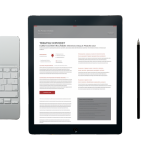For most hoteliers, thoughts of budget season are accompanied by the stress of long days packed with meetings about profit and loss statements.
This is no different in the revenue management department. An accurate demand forecast is important to a hotel budget as it provides the framework on which to build next year’s revenue goals. Therefore, each department across the hotel should use the same data — data collected, analyzed, and presented by you, the revenue manager.

Reporting is convoluted
Most forecasts and budgets will start with analyzing projected occupancy and average daily rate. Before segmentation, hotels should build a comp set performance forecast by looking a year out and budgeting by day how much occupancy and ADR you believe your comp set is going to achieve.
You might be tempted to look at market data and base your forecast solely on that. For example, perhaps the market is expected to see 3% to 4% RevPAR growth next year. Let’s assume you’re forecasting 1% occupancy growth. A simple approach would suggest a flat 3% rate increase. Basing your forecast off last year’s performance isn’t optimal, especially if your rates weren’t maximized last year.
Assuming the purpose of your budget is to understand your business and realistically manage revenue and profit expectations, your budget should closely resemble your forecast. Once you’ve analyzed how future market conditions will affect certain segments of demand, you can begin setting hotel-wide revenue goals.
Before setting revenue and expense goals, you should understand and present the important components of a forecast, as well as how yielding rates will dictate future demand. At any time, as a revenue manager, you should be able to look 30, 60, or 90 days out, and get a clear picture of anticipated occupancy and revenue.
Do you see the problem?
Budgeting and forecasting are incredibly time-consuming and manual processes, even more so if you’re the only revenue management professional at your business! An accurate forecast includes many layers of data, starting with historical and booking pace and forward-looking metrics, such as web-shopping data. If you have to pull all of this information together, you could be there for weeks…
So, what’s the solution?
Establish a “living budget”
A better strategy is to have a “living budget,” a real-time forecast of upcoming demand that, combined with forward-looking data, sheds the most light on future revenue potential. And you can use a revenue management system (RMS) to help you do this.
RMSs, like Duetto, bring all your information into one system, including competitor data, regrets and denials, and booking and reservation data, linking with your PMS too. With this data, you can generate accurate forecasts and budgets within minutes, from ready-made reports to bespoke ones, spanning multiple months and segments. They eliminate manual and repetitive data entry tasks, providing you with all the insights you need, and making you more efficient.
But the benefits don’t stop there! With an RMS, you can:
- Access real-time historical occupancy and future bookings.
- Create new forecasts automatically, based on up to five years in the future, with the option to apply overrides and adjustments.
- Visualize your data so you can spot patterns and trends at a glance.
- Schedule daily and weekly forecast and budget reports which can be easily distributed.
An RMS ultimately helps your business to be smarter with its cash flow. If you can see when the money is coming in, you can better schedule when payments can go out. This is especially useful if you report to an owner or group of investors.
Improve your hotel budget with an RMS
Time is the enemy and when you don’t have enough of it to do the calculations that have such a significant impact on your hotel, casino, or resort’s revenue, then the whole strategy falls apart.
That’s where an RMS pays dividends. It helps you eliminate manual and repetitive tasks, access and visualize all the data you need, and generate budgets and forecasts at the click of a button, making your job much easier.









